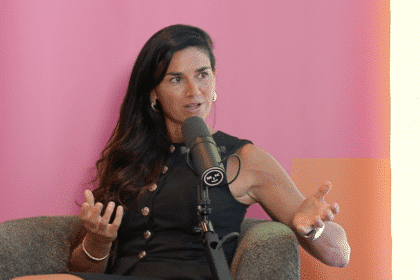Men continue to dominate the Australian media, from the newsroom to the boardroom, according to a new study showing women are severely under-represented in terms of media coverage.
The Women in Media Gender Scorecard released today reports on the portrayal of women featured in the news and used as both sources and experts in their field. It finds that men account for 70 per cent of quoted sources, with a similarly high figure included as experts.
Published by Women in Media, a 6000-member organisation for women working in all facets of the media – the Women in Media Gender Scorecard identifies core areas in media analytics (bylines, sources, experts) to monitor change and positive or negative shifts towards achieving parity for women. Research partner Isentia analysed 18,346 press, radio and TV news reports over a 14-day period, 18-31 July 2022, in compiling the research.
The Women in Media Gender Scorecard defines male-female parity as ‘100’ with any number under 100 showing an under-representation of women in the media.
Isentia’s insights director, Ngaire Crawford noted, “This research highlights the 14-point gap that exists today between male and female representation. Having an industry measure like the Women in Media Gender Scorecard provides tangible data and transparency on the issue of gender representation in the media”.
While the latest Women in Media Gender Scorecard of 86 out of 100 is up 8 points on the 2016 ranking, true parity with men remains a distant goal, according to Women in Media Strategic Advisor, Petra Buchanan.
“This report proves that a gender divide still exists,” said Buchanan. “The research shows that the inclusion, portrayal, and projection of women in Australian media has a way to go.
“Based on its current trajectory, the Women in Media Gender Scorecard will not achieve media gender parity until 2034. That is far too long to wait for equal representation of women as authors, sources and experts in the media. Steps need to be taken now to speed up change.
“Action in key sectors including retail, sport, health, social issues and education will drive us towards achieving that objective sooner.”
Key findings of the Women in Media Gender Scorecard include:
● Males dominate as byline authors, sources and experts in most prolific sections of the media: sport (82 per cent male authors, only 18 per cent women), politics (59 per cent male authors, only 41 per cent women) and finance (63 per cent male authors, only 37 per cent women).
● Even when adjusting for share of employment (using ABS data) females remain highly under-represented as sources and experts in media coverage.
● Several industries, such as retail and sport, recorded a 40 per cent under-representation of female experts given their high share of female employment.
● Sport has an outsized effect in the media, accounting for almost one-quarter of all bylined stories. With only 18 per cent of sport stories written by women it brings female bylines down to 43 per cent overall. If sports coverage was to be removed from the data, women’s bylines for the reference period would exceed parity at 51 per cent.
● Efforts to achieve gender parity among media organisations have had positive results, with an upswing of more than 10 per cent towards women since 2016. However the Women in Media Gender Scorecard projects it will take more than a decade to achieve parity unless proactive campaigns are implemented to effect change.
MORE WOMEN’S VOICES
Women in Media wants to ensure that women are seen and heard in media, and are called on for their leadership and expertise, commenting on issues and sharing their opinions, contributions and reactions as a fair representation of Australian society.
Ms Buchanan said: “For women to achieve parity in voice and representation we need the media to ensure more female journalists are writing, producing, fronting and being technically involved in all aspects. Women must be empowered as sources and experts in news and storytelling.
“Imposing a gender lens on the media is an important way to monitor progress and identify where effort, investment and action can be taken to address female under-representation.”
CALL TO ACTION
Women in Media concludes that industry, organisations and the media can make quicker advances to achieving gender parity in four specific areas.
● Industry and organisations to develop female sources and experts as media representatives. Review and assess levels of female representation, invest in training and development for spokeswomen, and commit to monitor change. Greatest impact could begin in retail, sport, and finance – fields with the smallest proportion of females as sources.
● Media to commit to increase female bylines equal to gender percentages of the population (50/50).
● Media to address gender imbalance in most prolific areas of coverage: sport, finance, health, and politics.








